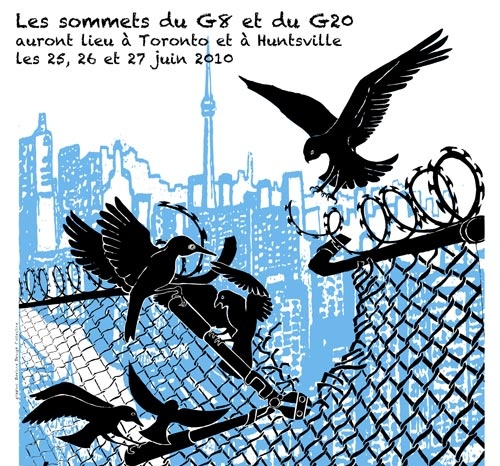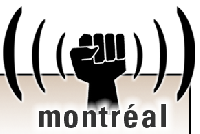 |
 |
 |
 |
 |
 |
|
 |
 |
 |
 |
 |
 |
 |
Régions du Québec |  |
 |
 |
|
 |
 |
|
 |
 |
|
 |
 |
 |
 |
 |
 |
Rubriques (sujets) |  |
 |
 |
|
 |
 |
|
 |
|
 |
 |
 |
VENEZUELA'S FEBRUARIES
FEBRUARY, 1983. Oil rich Venezuela, ruled by the "democratic" parties AD and COPEI, was enjoying the blessings of 30US$ per oil barrel and an exchange rate of 4.30 bolivares per US$. Middle class traveled to Miami, Florida more often they traveled to Isla Margarita, because plane tickets and all kind of commodities were cheaper there than in Venezuela, and better quality! Even that rich, only the rich oligarchy was allowed to enjoy the fruit of the hard oil laborers; the same commercial oligarchy who owned and controlled the food cycle: from agrarian and cattle production to distribution and consumption of elaborated products, ruining both the rural producers by paying them misery prices for their raw materials and the consumers by charging them with astronomic prices for their finished and packed foods. A great deal. When the government tried to control the prices, suddenly, the basic foods (milk, sugar, coffee, flour, salt, vegetable oil, rice, chicken, corned beef, eggs) disappeared from the shelves and people had to get in line to buy some of them, sometimes.
But world crisis finally touched venezuelan isolated paradise and, as greedy as few had been, the corrupted government thought they could get more revenues from oil by devaluating the bolivar, even when they were going to say, officially, it was to pay the exhausting external debt. And then it came the "Black Friday", when the Central Bank of Venezuela officially announced a "floating dollar", meaning that "any" venezuelan could actually buy a US dollar for 12-15 bolivares, an increase of almost 300% in the exchange rate (in fact this increase percentage determined which venezuelans were able to buy dollars). Of course, it was a dark day for the middle class who had to say bye-bye to Miami and all kind of beautiful imported goods; and to all the rest of plain citizens who had to pay more for basical imported products, because in 60 years (by that time) of oil exploitation venezuelan leadership was unable to turn Venezuela into a diversified industrialized economy. Therefore, middle class professionals were obliged to return to their changed country to share their destiny with their poor counterparts: food shortage, expensive cars, inflation, low wages and sort of. The government by that time came up with the idea of a State Corporation for Agrarian Marketing aimed to supply basic foods to the poor and impoverished middle classes (Corpomercadeo), but a brutal corruption and total incompetence finished the good intentioned initiative within one and a half year. (It's estimated the losses caused by that corporation doubled the amount the state invested in the Guri dam in the Caroni river -one of the largest in all western hemisphere, and which currently supplies almost 50% of the electric energy of Venezuela). February was in the air.
FEBRUARY, 1989. Still oil rich Venezuela was very poor: no middle class, only the riches and the poor. But even so, the riches wanted to be even more rich!, but the poor refused to be poorer. Newly oathed Carlos Andres Perez had the great idea to introduce into Latinamerica something called "the neoliberal package", the latest and newest invention of the Chicago Boys and his local protégés in the IESA (Institure of High Studies on Administration) to help the region (and the world, if succeeded) to get rid of all its ancestral diseases (mono-producing economy, inflation, external debt, fiscal deficit, bad and expensive public services, food shortages, etc.). But the mules were not ready to carry on that package and started to kick butt hard!! A raise in the price of gasoline from 3 bolivares per liter to 7 bolivares per liter (for the basic 87 octanes fuel), in a country filled with black gold in its bowels, set the prairie on fire and the poor decided they would take what they wanted when they wanted....for free. In February 27th and 28th, 1989 the miserable inhabitants of the Caracas' barrios (townships) came down from the cerros (hills surrounding Venezuela's capital city) and looted and burned everything on their path. Society was shocked, watching live on TV how the last hope for a social justice country vanished before its very eyes. No time went by before the answer from the leadership, both political and economical, came: Total suppression of the social upheaval, and the mission was entrusted to the Army directly, together with the political police (DISIP) and Grupo BAE (SWAT) ascribed to PTJ (Forencsics Police)....local police and National Guard would only have a supportive role in the massacre known as El Caracazo: to hide the bodies in clandestine common graves (only detected and which bodies were fully identified in the bolivarian government after years of a serious forensic and social investigation by a multi-disciplinary team, all of which served the Interamerican Commission of Human Rights as supportive material to sue the State of Venezuela for human rights violation and forced it to pay those victims relatives a sum of money to compensate that injustice, which Chavez government fully paid). Thousands died and were missing, adults and children, men and women, all poor. I still remember the motorcyclists carrying bleeding wounded persons in their back seats and police officers denying them to pass through to take them to the hospital; I still remember trucks full of coffins lining up on the streets waiting for the Army to give them permission to pick up the cadavers scattered all over the place. The hit was hard for the people but at last, for the first time in Venezuela's history, the majority of its people realized that crap they called "democracy" was not what they wanted as a life system, even less neoliberalism. February was in the air, but this time another kind of february was approaching.
FEBRUARY THE 4th, 1992. A devastated Venezuela (both socially and economically and politically) was impassive looking at her destruction when a handful of brave men and women broke the lugubrious silence of her torment and brought some light of hope for those desperate ones, the usual ones, the always poor. The coup de etat attempt led by Hugo Chavez, even when military failed, socially shaked the foundations of the whole system and waked the people from its slumber and has not stopped since then. It was just a message: "Our objectives were not accomplished, for the time being...", "Por Ahora". "Better times will come for Venezuela". A brave man facing the consequences of his actions, like nobody else did before, showing up on TV for less than a minute was enough to turn Chavez into a spiritual hope, a trusted and loved political leader and the core of the current bolivarian revolution taking place in Venezuela. The answer of the rotten and decadent system was to send them to prison and sentence them for rebellion, and of course, to continue with the application of the ill-fated neoliberal package, which led Carlos Andres Perez to resign in 1993 in the middle of the most important political crisis Venezuela had had since the toppling of General Marcos Perez Jimenez back in 1958 and the guerrilla warfare of the 60's. It was a civilian-military movement aimed to rescue Venezuela from Imperialism and its local lackeys and to return its wealth to its producers. Regretably for his impellers they didn't have an echo within some progressive and business leadership of that time, but viewing the Bolivarian Revolution in perspective february the 4th 1992 will remain as the baseline and spark that set Venezuela on fire (and by extension all Latinamerica), and that's because serious historians are saying now that you cannot understand today's Venezuela without knowing and understanding february 1983, and without knowing and understanding february 1989, even less without knowing and understanding february 1992. VIVA EL 4 DE FEBRERO DE 1992!!.-
| Documents inclus | Taille |
|---|---|
| caracazo1.jpg | 0 octets |
 |
 |
 |
 |
Dossier G20 |  |
 |
 |
|
 |
 |
|
 |
Nous vous offrons plusieurs reportages indépendants et témoignages...

Liste des activités lors de ce « contre-sommet » à Toronto Vous pouvez aussi visiter ces médias alternatifs anglophones... Centre des médias Alternatifs Toronto 2010.mediacoop.net Media Co-op Toronto http://toronto.mediacoop.ca Toronto Community Mobilization www.attacktheroots.net (en Anglais) |
 |
 |
 |
 |
 |
 |
 |
CMAQ: Vie associative |  |
 |
 |
|
 |
 |
|
 |
 Collectif à Québec: n'existe plus. Impliquez-vous ! |
 |
 |
 |
 |
 |
 |
 |
 |
|
 |
 |
 |
Ceci est un média alternatif de publication ouverte. Le collectif CMAQ, qui gère la validation des contributions sur le Indymedia-Québec, n'endosse aucunement les propos et ne juge pas de la véracité des informations. Ce sont les commentaires des Internautes, comme vous, qui servent à évaluer la qualité de l'information. Nous avons néanmoins une
Politique éditoriale
, qui essentiellement demande que les contributions portent sur une question d'émancipation et ne proviennent pas de médias commerciaux.
This is an alternative media using open publishing. The CMAQ collective, who validates the posts submitted on the Indymedia-Quebec, does not endorse in any way the opinions and statements and does not judge if the information is correct or true. The quality of the information is evaluated by the comments from Internet surfers, like yourself. We nonetheless have an
Editorial Policy
, which essentially requires that posts be related to questions of emancipation and does not come from a commercial media.


